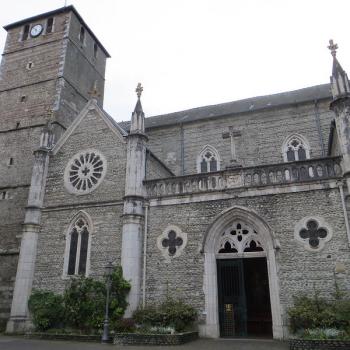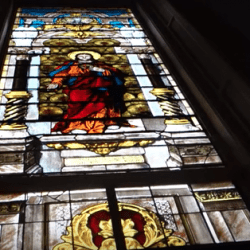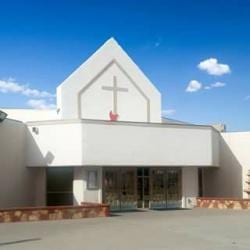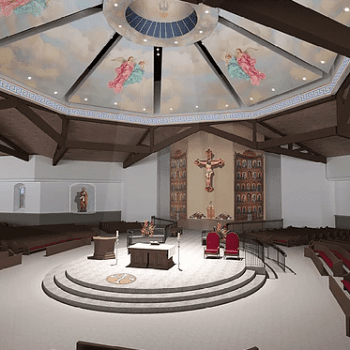Would you believe…2003? It’s an Anglican Catholic Our Lady of Walsingham Church near Houston.
And this one below? 2008. It’s St. John Neumann Catholic Church in Farragut, Tennessee.
Both are part of a growing trend toward more traditional church architecture, according to this piece in the National Catholic Register:
“That is an enormous change from 10 years ago,” said architect Ethan Anthony of HDB/Cram & Ferguson Architects of Concord, Mass. “I’ve seen it go from nobody even thinking about this to it becoming kind of a cause. It’s a big deal things are happening.”
The trend pushes against the modernist architecture that frequently typified church construction in the second half of the 1900s — and returns to design seen in the first half of that century. In the United States, traditional architecture gave rise to churches such as St. Florian in Hamtramck, Mich. Built with a penny campaign and dedicated in 1928, it is a “most spectacularly huge,” Gothic church, according to Anthony.
It is as much statement as it is stature. St. Florian was designed by renowned Boston architect Ralph Adams Cram (a founder of Anthony‘s firm). The St. Florian website notes that “Cram rebelled against the hard-nosed social Darwinism of the Industrial Age and sought to reclaim the beauty and spiritual values of the cathedrals of the Middle Ages.”
Not long thereafter, though, such churches became a thing of the past.
First the Depression strapped parishes and put church construction projects on hold, Anthony said. World War II caused another interruption, and Anthony said men returned from the war “really in love with science.” That, he added, coincided with “a huge secularization, even in the Catholic Church.”
Architecture, meanwhile, began to emphasize “basic, simple, modern, straightforward” design. More changes were sparked by Vatican II, especially the document addressing art in churches, Sacrosanctum Concilium. That document, though primarily about the reform of the liturgy, also spoke about church architecture. Some church designers, though, went farther than the document itself.
“People within the various dioceses in the United States seized up on that because they wanted to promote modern architecture in the Catholic Church and said, ‘Well, Vatican II said we have to tear out all this old furniture because it’s old,’” Anthony said. “What a terrible destruction happened.”
Duncan Stroik, an architect in South Bend, Ind., said, “The misinterpretation of Vatican II was like Pandora’s box in which architects and clients thought that it meant anything goes. Anything as long as it was not traditional styles.”













